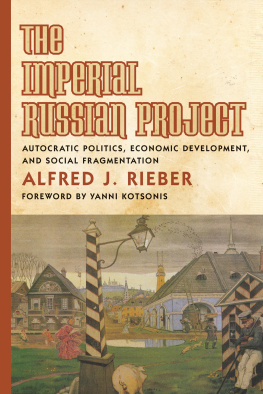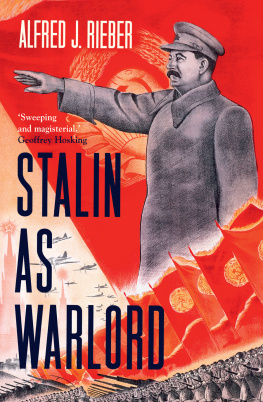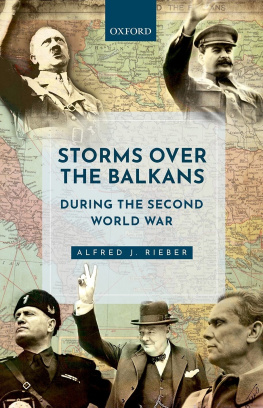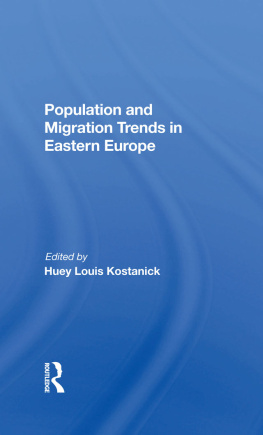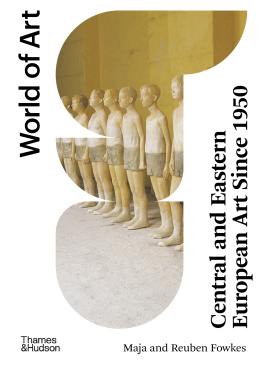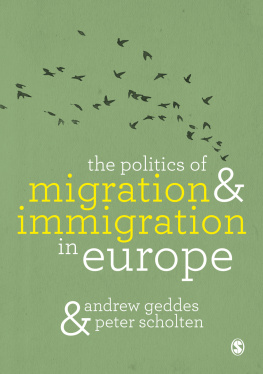Alfred J. Rieber - Forced Migration in Central and Eastern Europe, 1939-1950
Here you can read online Alfred J. Rieber - Forced Migration in Central and Eastern Europe, 1939-1950 full text of the book (entire story) in english for free. Download pdf and epub, get meaning, cover and reviews about this ebook. year: 2013, publisher: Taylor & Francis, genre: Politics. Description of the work, (preface) as well as reviews are available. Best literature library LitArk.com created for fans of good reading and offers a wide selection of genres:
Romance novel
Science fiction
Adventure
Detective
Science
History
Home and family
Prose
Art
Politics
Computer
Non-fiction
Religion
Business
Children
Humor
Choose a favorite category and find really read worthwhile books. Enjoy immersion in the world of imagination, feel the emotions of the characters or learn something new for yourself, make an fascinating discovery.
- Book:Forced Migration in Central and Eastern Europe, 1939-1950
- Author:
- Publisher:Taylor & Francis
- Genre:
- Year:2013
- Rating:4 / 5
- Favourites:Add to favourites
- Your mark:
- 80
- 1
- 2
- 3
- 4
- 5
Forced Migration in Central and Eastern Europe, 1939-1950: summary, description and annotation
We offer to read an annotation, description, summary or preface (depends on what the author of the book "Forced Migration in Central and Eastern Europe, 1939-1950" wrote himself). If you haven't found the necessary information about the book — write in the comments, we will try to find it.
Forced Migration in Central and Eastern Europe, 1939-1950 — read online for free the complete book (whole text) full work
Below is the text of the book, divided by pages. System saving the place of the last page read, allows you to conveniently read the book "Forced Migration in Central and Eastern Europe, 1939-1950" online for free, without having to search again every time where you left off. Put a bookmark, and you can go to the page where you finished reading at any time.
Font size:
Interval:
Bookmark:
edited by Ronald J. Hill
edited by Stephen White, Rita di Leo and Ottorino Cappelli
edited by Michael Waller, Bruno Coppieters and Kris Deschouwer
edited by Patrick H. ONeil
edited by Michael Waller and Martin Myant
edited by John Lwenhardt
edited by Chris Corrin
FRANK CASS PUBLISHERS
2 Park Square, Milton Park, Abingdon, Oxon 0X14 4RN
711 Third Avenue, New York, NY 10017
politics; v. 16/1 & 2)
1. Forced migration Europe, Central History 20th
century 2. Forced migration Europe, Eastern History
20th century 3. Forced migration Europe, Central Case
studies 4. Forced migration Europe, Eastern Case studies
I. Rieber, Alfred J. (Alfred Joseph)
325
and Eastern Europe, held in September 1996 in Budapest, Hungary.
Communist Studies and Transition Politics (ISSN 1352-3279) 16/1 & 2
(March/June 2000) published by Frank Cass Verso t.p.
ISBN 0-7146-5132-X (cloth)
1. World War, 1939-1945 Refugees Congresses. 2. World War,
Eastern History Congresses. 4. Population transfers History
Congresses. I. Rieber, Alfred J. II. Conference on Population Transfers,
Deportations and Resettlements in Central and Eastern Europe (1996:
Budapest, Hungary) III. Journal of communist studies and transition
politics. Vol. 16, nos. 1-2 (Special issue)
D809.E852 F67 2000
940.5308691 dc
Forced Migration in Central and Eastern Europe, 1939-1950
of The Journal of Communist Studies and Transition Politics (ISSN 1352-3279)
16/1 & 2 (March/June 2000) published by Frank Cass.
Font size:
Interval:
Bookmark:
Similar books «Forced Migration in Central and Eastern Europe, 1939-1950»
Look at similar books to Forced Migration in Central and Eastern Europe, 1939-1950. We have selected literature similar in name and meaning in the hope of providing readers with more options to find new, interesting, not yet read works.
Discussion, reviews of the book Forced Migration in Central and Eastern Europe, 1939-1950 and just readers' own opinions. Leave your comments, write what you think about the work, its meaning or the main characters. Specify what exactly you liked and what you didn't like, and why you think so.


